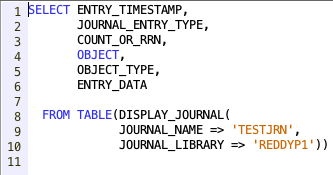Gram-Schmidt Process Explained (The Math of QR Decomposition)
The "Purification" Algorithm: A Developer's Guide to the Gram-Schmidt Process
In linear algebra, we often start with a basis for our vector space. But as we've discussed, not all bases are created equal. A "messy" basis—where vectors are skewed and not at 90-degree angles—can make calculations inefficient and numerically unstable. This is a real problem for engineers and data scientists who need reliable and fast computations.
What if there was an algorithm that could systematically take any messy, "contaminated" toolkit of vectors and "purify" it into a perfect, 90-degree, orthonormal one? There is. It's an elegant and powerful procedure called the Gram-Schmidt Process.
In this post, we'll decode this algorithm not as a formula to be memorized, but as an intuitive, step-by-step process of cleaning our data's toolkit.
Watch the video for the full visual story, then scroll down for the detailed breakdown and code.
The Mental Model: Purification by Projection
The intuition behind Gram-Schmidt is to build our clean, orthogonal basis one vector at a time. Let's say we start with a messy basis {v₁, v₂}. We want to produce a clean, orthogonal basis {u₁, u₂}.
Step 1 is easy: We have nothing to compare against yet, so we accept the first vector v₁ as the foundation for our new basis. We'll call it u₁.
Step 2 is the crucial insight: The second vector, v₂, is "contaminated." It contains a component that is aligned with u₁, and a "pure" component that is new and orthogonal to u₁. Our goal is to isolate this pure part.
To do this, we use the tool we mastered in the last video: the Orthogonal Projection. We can find the "contaminated" part of v₂ by projecting it onto u₁. This projection is the "shadow" of v₂ that lies along u₁.
Once we have this shadow, we can "purify" v₂ by surgically subtracting the shadow from it. What's left over is the new, clean vector u₂, which is guaranteed to be orthogonal to u₁.
The Algorithm Step-by-Step
Let's formalize this intuitive process. Given a starting basis {v₁, v₂, ..., vₙ}, we find the orthogonal basis {u₁, u₂, ..., uₙ} as follows:
- Find u₁: Trivial.
u₁ = v₁ - Find u₂: Subtract the projection of v₂ onto u₁.
u₂ = v₂ - proju₁(v₂) = v₂ - ( (v₂ ⋅ u₁) / (u₁ ⋅ u₁) ) * u₁
- Find u₃: Subtract the projections of v₃ onto *both* u₁ and u₂.
u₃ = v₃ - proju₁(v₃) - proju₂(v₃)
- ...and so on for all vectors.
Finally, to turn our new orthogonal basis into a perfect orthonormal basis, we simply normalize each new vector by dividing it by its own length (norm).
The Payoff: QR Decomposition
For a developer, this process is more than just a mathematical curiosity. The Gram-Schmidt process is the engine behind a fundamental operation in numerical computing called QR Decomposition.
QR Decomposition takes any matrix A (whose columns are our messy basis vectors) and factorizes it into two highly useful matrices: A = QR.
- The Q matrix is an orthonormal matrix. Its columns are the clean, perfect basis vectors we just constructed with Gram-Schmidt.
- The R matrix is an upper-triangular matrix that stores the "recipe"—it records how the original vectors were combined to create the new, clean ones.
This is a critical tool for solving linear systems and lies at the heart of many machine learning algorithms.
In Code: The NumPy Way
First, let's implement the process manually to solidify our understanding.
import numpy as np
# Our messy, non-orthogonal basis vectors
v1 = np.array([2, 1])
v2 = np.array([1, 2])
# Step 1: The first vector is our foundation
u1 = v1
# Step 2: Purify the second vector
# Find the "contamination" by projecting v2 onto u1
proj_u1_v2 = (np.dot(v2, u1) / np.dot(u1, u1)) * u1
# Surgically remove the contamination
u2 = v2 - proj_u1_v2
print(f"Orthogonal vectors:\n u1 = {u1}\n u2 = {u2}")
e1 = u1 / np.linalg.norm(u1)
e2 = u2 / np.linalg.norm(u2)
print(f"\nNormalized orthogonal vectors:\n e1 = {e1}\n e2 = {e2}")
In a real-world application, you would never do this by hand. NumPy's linear algebra module provides a powerful, optimized function to do it for you.
# Define the original matrix A with the messy vectors as columns
A = np.array([[2, 1], [1, 2]]).T
# Perform QR Decomposition
Q, R = np.linalg.qr(A)
print(f"\nOrthonormal Matrix Q:\n {Q}")
print(f"\nRecipe Matrix R:\n {R}")
Conclusion
The Gram-Schmidt Process is a beautiful example of the power of linear algebra. By starting with a clear problem and applying a single tool—the Orthogonal Projection—we were able to derive an elegant algorithm that can "purify" any set of linearly independent vectors into a perfect orthonormal basis.
We've now mastered the art of building and using perfect coordinate systems. But what happens when our problems don't have a perfect solution at all? What if our data is fundamentally messy? In our next video, we'll tackle that exact problem.
Your Turn...
The Gram-Schmidt process feels like "purifying" a set of vectors. What's another concept in programming or math that feels like you're turning something 'messy' into something 'clean'? Let me know in the comments!
This post is part of the "Linear Algebra: The Core of Machine Learning" series. For the previous part, check out: How to Deconstruct Any Vector (A Guide to Orthogonal Projections).


Comments
Post a Comment